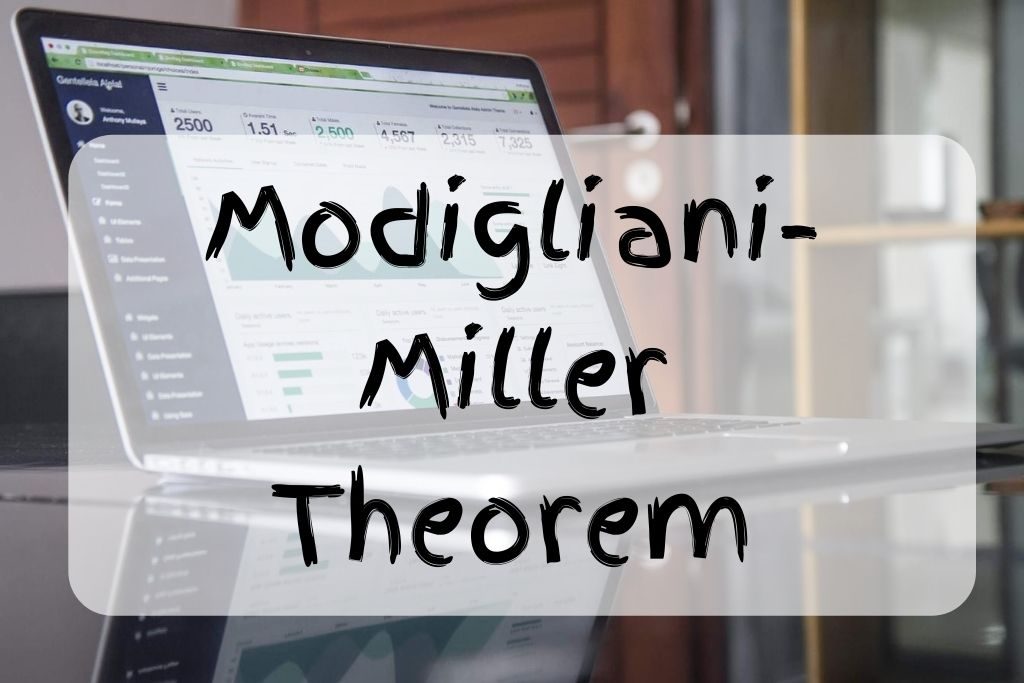What is the Modigliani–Miller Theorem?

Definition of the Modigliani-Miller Theorem
- The theory suggests that a company’s capital structure and the average cost of capital does not have an impact on its overall value.
- The company’s value is impacted by its operating income or by the present value of the company’s future earnings.
- It doesn’t matter whether the company raises capital by borrowing money, issuing new shares, or by reinvesting profits in daily operations.
Want to learn more financial ratios?
Get the eBook explaining some of the most useful ratios for free now.
Interpreting the Modigliani-Miller Theorem
- The basic theory assumes a perfectly efficient market, without issues of taxes and other financial costs.
- The first proposition of the M&M says that the value of leveraged firms (capital structure with a mix of debt and equity) and unleveraged firms (capital structure with only equity) are the same. If not, there would be an arbitrage opportunity and will eventually become equal.
- Arbitrage is the opportunity to earn profit through market fluctuations with the common practice of buying at a lower price to sell at a higher price immediately.
V(unlevered) = V(levered)
(Where V(unlevered) = company with no debt financing and V(levered) = company with some debt financing)
- Investors that purchase shares of a leveraged firm, one with a mix of debt and equity financing, would receive the same profits as when buying shares of an unleveraged firm, which is financed entirely by equity.
- The second proposition states under the theory with no taxes suggests that the cost of equity of a company is proportional to the company’s debt level.
- When debts increase in a company, there are more chances of going default.
- Investors demand a greater return on their investments with the increase in risk.
re = ra + D/E (ra – rd)
(Where re = cost of levered equity, ra = cost of unlevered equity, rd = cost of debt, D/E = ratio of debt to equity)
The Modigliani-Miller Theorem in Practice
- In the real world, companies are not free from the obligation to pay taxes and other transactional costs.
- Considering this, the Modigliani-Miller Theorem has been revised to accommodate the real-world scenarios better.
- The first proposition under this revised theorem suggests that the value of a levered company is greater than the value of an unlevered company, with the tax-deductible interest expense.
V(levered) = V(unlevered) + (T * D)
(Where V(unlevered) = company with no debt financing, V(levered) = company with some debt financing, T = tax rate, and D = amount of debt)
- The second proposition considers the relationship between the cost of equity and the level of debt, as risks are still involved.
- The formula for WACC used under this proposition states that when the level of debt increases, there is a guaranteed drop in the WACC.
- With this, there is an optimal capital structure when the debt level is 100%.
re = ra + D/E (ra – rd)(1 – T)
(Where re = cost of levered equity, ra = cost of unlevered equity, rd = cost of debt, D/E = ratio of debt to equity, and T = tax rate)
- Assumptions made here include taxations on earnings after interest, the inexistence of transactional costs, and the same borrowing rate for individuals and firms.
Learn some of the most useful financial ratios!
Don’t miss this free eBook.
